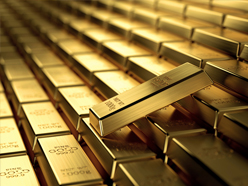
Global economic challenges, the strengthening U.S. economy, and an imbalance of supply and demand have had a devastating impact on the commodities market, according to PwC’s Gold, Silver and Copper Price Report.
The report notes low prices have led to widespread cuts across the sector from exploration to production and both operating and capital expenses.
Read: Help clients look past volatile oil prices
However, the current slump in prices is reflective of the cyclical nature of the industry. For gold companies, while the long-term view is above current spot prices, volatility remains the key issue. For base metal producers, a growing global population that will have greater overall need for products such as cars, computers and household goods has helped support current prices.’
Read: Don’t overlook real assets, say experts
“Due to the low commodities price environment, miners have had to cut costs to survive,” says John Gravelle, global mining leader, PwC. “Now, they must continue to employ responsible cost management and sound investment in production.”
Gold
- Gold is trading at multi-year lows—under $1,200 per ounce. The decline has been driven by the strength of the U.S. economy and expectations of higher interest rates.
- While the long term price of gold for planning purposes is down in 2014 compared to twelve months ago (now at $1,284 per ounce on average), mining companies have narrowed the range of their view of the long term price. However, the pricing used for reserve pricing has remained relatively consistent year over year.
- Cost-cutting has been the order of the day with all-in sustaining costs being the key metric companies use to report costs. The issue is that many mines are operating at cost levels above spot prices.
Read: Advisors bullish on stocks in Q4
Silver
- Silver has been hit the hardest in the past three years, falling by more than half to below $16 per ounce today.
- Reducing costs will be key for silver companies to survive the current price rout as companies focus on what they can control, rather than on a volatile market price.
Read: What to do with digital currency
Copper
- Copper, used in everything from cars to electricity transmission, will always be needed to make goods like these that consumers demand.
- While the metal is now trading around $3 per pound, down from its record of $4.60 in early 2011, the price hasn’t bounced around as much as other commodities. The long-term price for copper was found to be $3.11 on average, with a narrow band of prices that companies are using for planning and reserves of $3.00 to $3.25 for the majority of companies.
- Due to its widespread use, the price of copper is still considered high enough for many well-disciplined producers to make a profit.